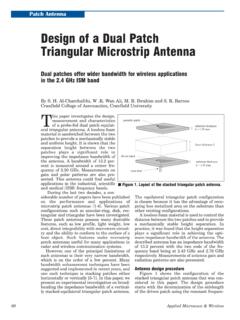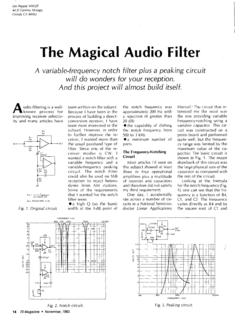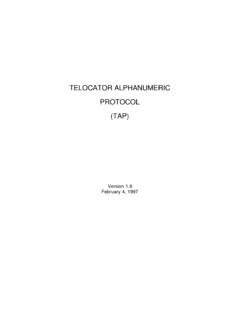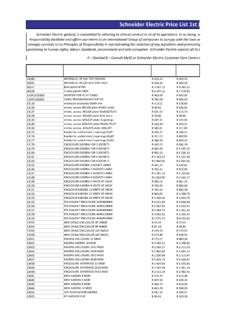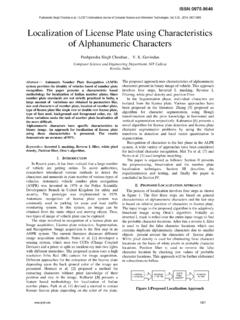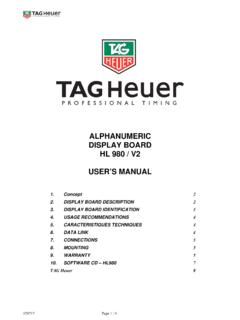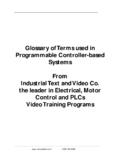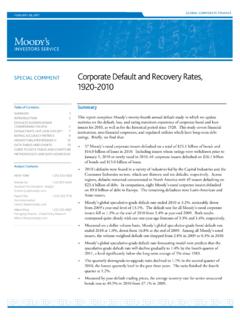Transcription of messages airwuves view - N5DUX
1 Catch beeper messages @om the airwuves with thi~ device and view them oa your computer screen. BY ALAN D, JONES D ighl pagers, or beepers as they're commonly called, have become exceedingly popular in the past decade. Pagers of ail Wnds are dlppd to the belts of mtlllms of people Ma)c and Ws quite likely thaf me of those people is you. A signal Intended for a digital pag- er consists, amow other ihlngs. of an individual pager address followed by the message to be dlspbyed on the pager. Note that the word "dlglkrl" here refefs to any pager that receiw binary data, Inciudlng both numeric [digits only) and alphanumerlc [full tq pagers, The mcjority of messages in a broadcast wlll be slrnple tele- phone numkrs or dlgR codes, but people wh alphanumerlc pagers are Increaslngb making use of de- tailed fed mesages. often of consid- erable length.]]
2 But how do you know If the mes- sages blng transmitted are belng re- ceived corm7 Thsrek no backup message generated by paging ser- vices, ard you therefore hove no way of detennlnlw if you're getting the whole message . M needed Is a way of getting a =and look at o messuge. The Alphanume& mr hxdw descrlhd In fhls article, together with a scanner radio and a PC, wIII prmlt you to Me the messages that are transmitted to about 80 or 90 percent of beepers that are commercially avallable, and view them on your computer screen. Mu could, for ex- ample, keep a log on dlsk of all mes- saw iransmWd to your own pager and verlfy thcrt all were received by the beeper. Also, corporotlons could keep time-stamped logs of all mes- sages sent to therr in-house pagers. Unlts llke the Decoder are quite effective, and for thls reason are even used by law-enforcement ogencla, Wlth such high-tech help the gW guys in blue can keep tabs on the deol tngs of known nefarious charac- ters.
3 How Pages are Transmitted. Paglng channels can be fwnd scat- tered around the VHF 1152 MHz) and UHF (454 MHz) bands. In most metro- politan areas, a large number of pap ing channels con be found wthh the dedicded paging band from 929 to 932 MU To discover the frequency UW by a speclflc paging servlce, just look at one of their pagers. There wlll almost am be a stlcker indldng the reception frequency. Pager signals of the type we are interested In here are modulated by the "dim FSK method. This means that Re Rf caniw Is slnritched be- tween center frequency + kHz and center frequency - kllr to represent binary "1" and 3," respec- Rvely Blt rates currently range from 300 to 2400 Ids per second. The most commmty used data for- mat is POCX .[Post OfRce Ccde Standard Adviswy Group). Thls codlng standard was cl&sed In a mrles of medings of industry r9-m hosted by British Tern In 1978 and 1980.]
4 POCSAG is a 32-bbper-word synchronous error-correcting code using a 17-word frame. It Is &cudcast at 512,1200, ad 2400 bits per sec- 5 ond. On mosi paging channels you wlll hear the &ml mitcMng rupidb between d~ffwerd ba rates as various 8 pagers are ddrewd. To learn to rec- 2 ognlze POCSAG by its dlstlnctlve sound, just use fhe search mode on $ your scanner In Ifw -9- to 932-MHz # signals $ youhearwillbe~atoneofthe three standard bit rates (see the H "POCSP6S messages " bw for more in- formation]. 39 -vR747 KRiii0K041114148D51N4148-R146 SKG747pFH2+5VR4200K+ ~Ji~N~L IR1S1OK"'.'A,)R19Ie:I;. ~v~~ PCserialport, (/)()'1:etJQ.)ill~' '~.<::t:?~ perfecttyde-modulatedpagingsignalshoulda p-pearonanoscilloscopeasa seriesofrectangularpulsesofvaryingwidth( squarewaves), ,mostlow-tomoderate-costscannersweredesi gnedspecificallytolistentovoicetransmiss ions,Asaresult,thatnicecleansquarewavepa ssesthroughseveralstagesof!
5 ,OneoftheseIsthatallDCinformationislost; ifa longstringof1'sorO'sis encountered(nobittransitions), ,Thesecondovershoot(backintheoriginaldir ection)is usuallywell-dampedandofmuchlowerampli-tu de,Tomakemattersworse,the"ringing"freque ncyis oftenroughlyequaltohalfthebitrateofa 1200-bpsdatastream,causingtransition-in- ducedspikestosometimessuper-posethemseiv esonthefirstovershootfroma previoustransition,TheDecoderattemptstor econ-+5 VSO1I-vljO-lC4+1D31N4148+V"--+ I 'C610611'14148-:::-+V+5V1G81-strus:ttheo riginaldatabytheuseofaSchmitttrigger,The reare"!wooppor- ,Foranyparticularscanner,.directexperime ntationwilldeterminethebestlocationforth etriggerpoints,If yourscannerhasa "discriminator"orraw-dataoutputthenyoush ouidbyallmeansuseit ,So,aswe'llseelater, littleworkwithasolderingironcanbringouta nextrapairofwires(ora jack) ,youcannormailydecode1200-bpsandlowertra nsmissions,butitsprettyhopelesstoextract usefuldataat2400bpswithouta ' Intoa serialport,butthefoilowingmustbeconsider ed.
6 (1)bitratesmaychangeunexpectedly,and(2)P OCSAGis a 32-bltsynchronousformatthatIs incompatiblewiththedatainputmechanismof thetypeofUART thatis sometemptationtosolvebothofthesedifficul tiesbyfeedingthesignaltoa "handshake"lineoftheserialport(insteadof thenormaldataline) ,thereexistproductsonthemar-ketthatdoexa ctiythis,andtheInge-nuitythatmusthavebee nrequiredtowritesuchsoftwareis a "own"ailtheCPUtimein MicrochipPIC16C54mi-croprocessoris usedtoreformatthedataintoa formthatis acceptabletoa ,theembeddedsoftwareforthePICCPU operatessim-plyasa constant-ratesampler, ,thegroupis transmit-tedtothePCserialportasa conven-tionalasynchronousbyte,includings tartandstopbits,at19, (moreforlowerrates), thismethodisthatsincedataisreceivedbythe PCserialportInthestandardway, ,becauseof thebufferinginthedevicedriver,caneasiiyr unin ,word-sync, ,anddisplaythedatastreamfromthisdevicewo uldbea , ;ifyouneedto never-end-ingstreamof19200-bauddataandpe rforminga is necessarytousea rea-sonablyfastPCtorunsuchapro-is:I1 Jii:::I~,"'""1;0"0co~IT15$)g1)(J)41gram; werecommenda 33 MHz486asa (pin4ofS01)providesnegativevoltageandthe data-termi-nal-readyline(pin20ofS01)prov idespositivevoltage(softwaremustsetthese outputsappropriately).
7 Reg-ulatorIC3createsa (negativesupply)doublesasaresetcontrolfo rIC1whenIt is setmomen-tarilyposiJive,whilethedata-out putlinefromthePCservesasa separatenegativesupplytoproducethenec-es saryvoltageswingtodrivethePC' a simulatedspeakerloadforthescannerif lowpassfiltertoremovethe455-kHzIFcompo-n ents(andharmonics)thatareoftenpresentatd iscrimi[ "r1-3/8 INCHES~ ~Dj5Sl.,.~i) ' properlyassembledDecoderPCboardwillfitin sidea ,IC2-a,is simplya bufferandgainblockwithtwojumper-seiecta- blegainsettings;IC2-cbuffersthesig-na! + ,sectionIC2-b, !ogicleve!sforinputtomicro-controllerICt a , ciock-ratesensitiveandwillnotworkunlessa 4-MHzcrystalis , 'dhavetofolloware:(1)Besurethatcrysta!xr AL1 (2)KeepC8closetoIC3, ,whenit comestosize,buildingthecircuitona bread-boardis , , you'dliketoetchyourowndouble-sidedPCboar d, and3, ,youcanordera youbuildtheDecoderonthecir-cuitboard,use theparts-placementdiagramshownin Fig,4 asa youplantoenclosethecircuitintheplasticsh ell; (Ql,Q2,Q3,andIC3)withtheirplasticcasesaU thewaydowntotheboard, holein ,makesurethatC9is smallenoughtofitin guidewhenassemblingtheDecoderona ,thisis therecommendedse- theboard, theboardusingonlypins1 , guide, ,C2,C3,Xl, ,R14, 11'111' ,especiallyQ1--Q3, ;theshellis ,Itisnec-essarytohaveeithertheAccuPageRa dioMonitorprogramforthePC(mentionedearli er)ora testprogramthatsetstheCOMportasfollows:R TS=0, om= 0 ,fol-lowedbyRTS= 1,DTR= , (relativetocir-cuitground)atIC1pin14andI C2pin11.]
8 Theseshouldbe+ 5 voltsand-6 ,Installa connectingpintoheaderH1;removeitifyouare usingadiscriminatoroutput(moreonthatlate r).LeavethepinonheSJderH2off;it Is neededonlyin a youareusinga discrimi-natoroutput,thenthefoilowingpar a-graphreferencingvoiume-controlsettings doesnotapply;youshouldbeabletojustplugan dgo,IftheLEDdoesnotcomeonduringtransmis- sions, "Enable"check-boxnearthetopof ;stopat ; pagingtransmission, shouldnotgooutexceptbe-tweentransmission s.(Ifyouhaveanoscilloscope,connectonecha nneltopin1ofIC2andtheothertopin9 ofiCitoseehowthecircuitIsinterpret-ingth eanalogwaveform.)It Is worthpausingherefora mo-menttoemphasizetheimportance' re-orienttheantennaasnec-essary! widebandreceiverIsoftennotasgoodasthatof a single-fre-quencypagerreceiver, "Signal" theonetowatchinitially;therightindicator al-waysstartsat"100%bad"andrepre-sentsa ,andtheLEDglowsasdescribed,trytogglingth e"InvertedData" differentandtheoutputpolarityofyoursmayb ebackwardsfromtheprogram' youjustcan'tseemtogetanyIndicationOilthe signalindicator,tryIncreasingthevoiumese ttingbytiny<"!
9 :< rafscu4:incrementalamounts,beingsuretotr ybothsettingsof"InvertedData"ateachposit ion,Oncetheindicatorshowssomegreen,thenk eepadjust-ingthevolumeforbestresults(min i-mumred),ifyouaregettingreadingsbutareu nabietoreducethe"bad"(red)percentagetoa smallvalue,thenapproachfromtheothefdirec -tion,SettheInvertedDatacheckboxtoitsopp ositesetting(totriggerontheovershootasde scribedearlier)andincreasethevolumeto a muchhighersetting,Thendecreasethevolumei n-crementally, youwouldliketoseeonlytextmessages,ortofi lterthemessagessothatonlythoseforparticu larpagersarelog-ged,select"File/SearchLi sffromthemenubar,A typicalpagingservicemighteasilytransmit1 00,000pagesperday,andthemessagelogfilege neratedbyloggingallof themwillrapidlygrowtoa sizeofmanymega-bytes, :[1)Connectorproblemsatthescan-neroutput .(2)WrongCOMportsetupIn soft-ware.(3)"InvertedData"settingisinco rrect.]
10 (4)Computeristooslow(usea 486/33orfaster),(5)Weakornoisyradiorecep tion,(6)Wrongsettingsforpinsin H1andH2.(7)Thereceivedsignalis notdirectFSK.(8)Wrongscannerdemodulation mode(shouldbenarrowFM),(9)Thereceivedsig nalisnotPOCSAG(thereareotherpagingformat s),(10)Solderingproblems,wiringerrors,da magedcomponents, (thoughwewillgivetipsforonelateron),Here aresomegeneralsugges-tions:.Firstofall,g eta schematicofthescanner!Withoutthis,yousti limighthavesuccess,butIrsgoingtotakeanos cilloscopeanda lotofpatience, ,probablywitha second-orderlowpassfilterandasecond-orde rhighpassfiltersome-whereInthechain,Tryt oobtainatake-offpointat fewtenthsofavolt,shouldlooklikesquarewav es,andIs likelytohavea lotof910kHzsuperimposedonit (tV\licethelowestIF),Asanalternative(par ticularlyifyoudon'thavea schematic),lookfortheFMdemodulator,Inman yscanners,thisis thepopularMotorolaMC3361chip,Ifyoufindon eoftheseIn yourscanner,thenpin9 is theunfiltereddemodulatoroutput,Depending ontheexternalcircuitry,it ispossiblethatpin11is alsoa "squarest-looking" ' :Insomehandheldscannerswehaveexamined,th e"case" (Continuedonpage60) removed(seetext),usethisphotoasa guidetolocatingthesignal-connectionpoint fordemodulatoroutput.



